Bust of an intellectual (?)
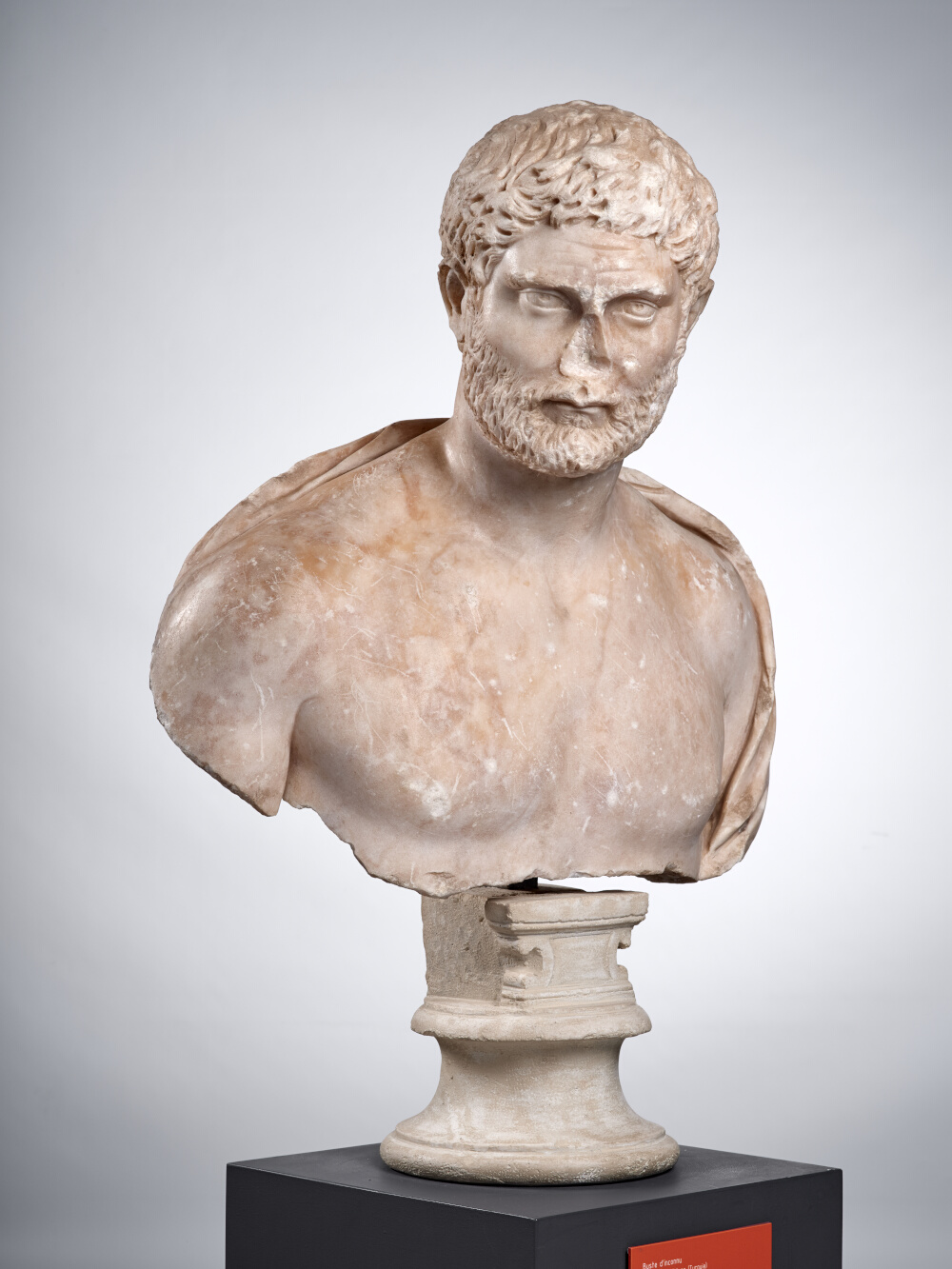
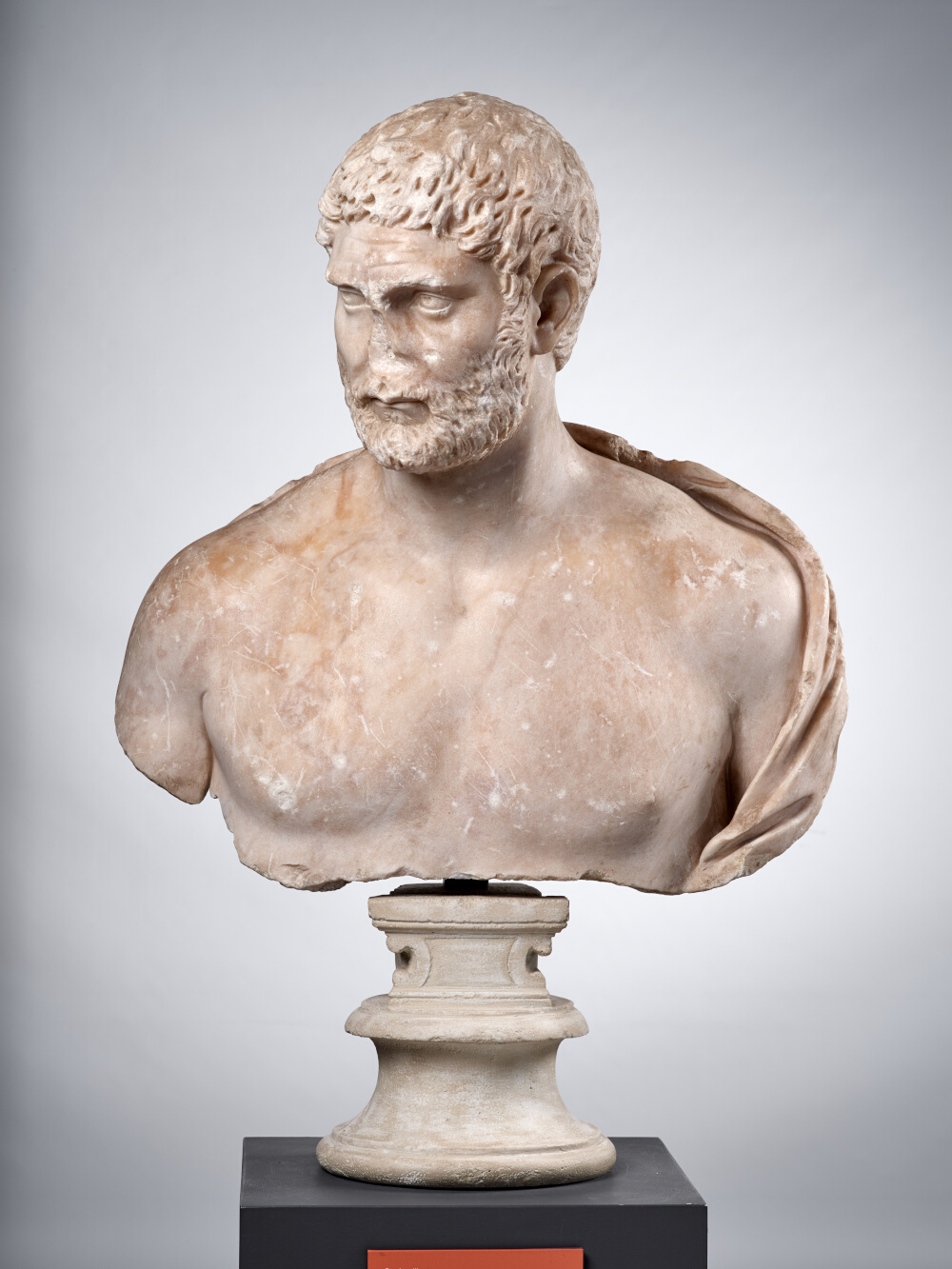
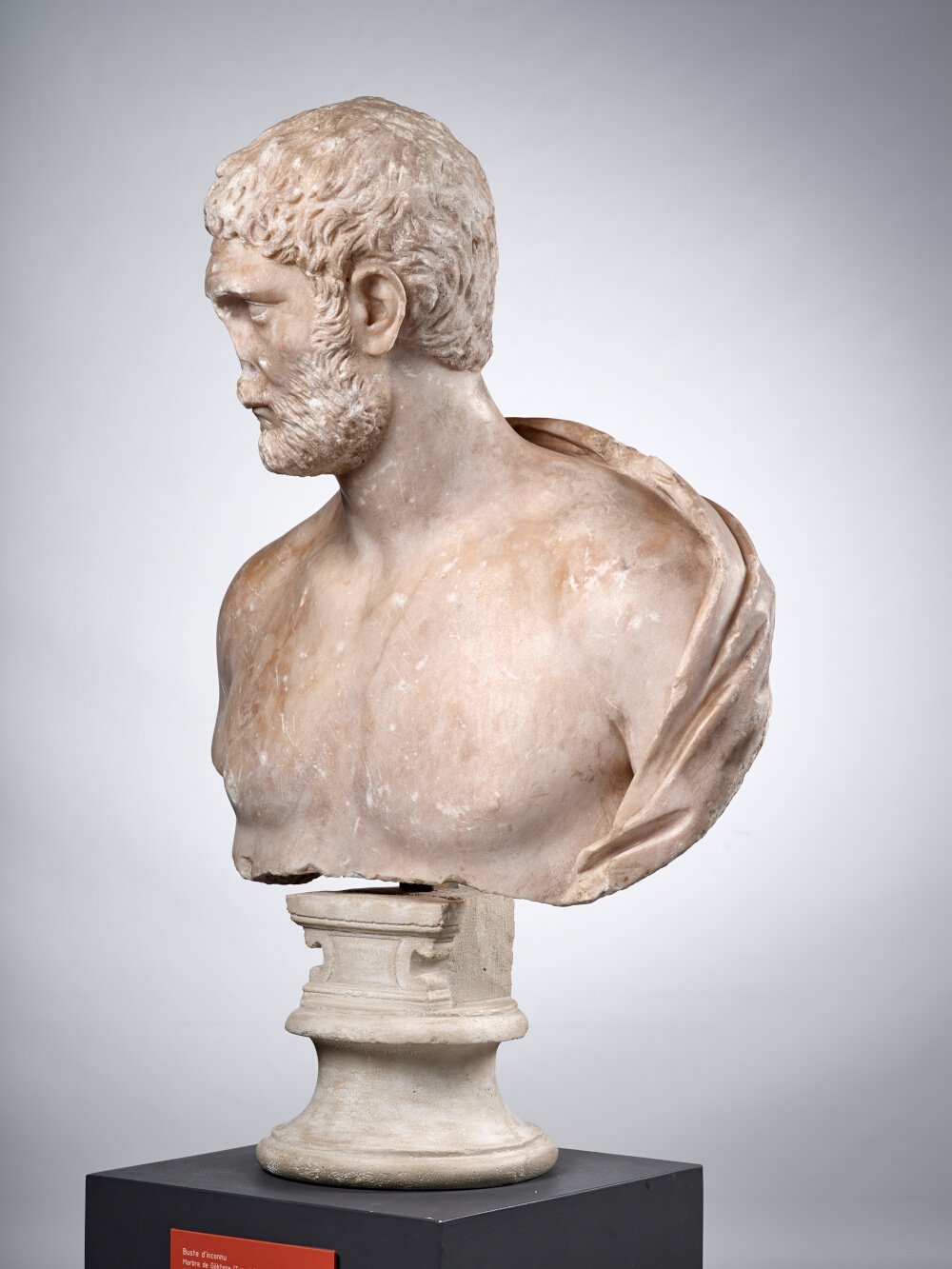
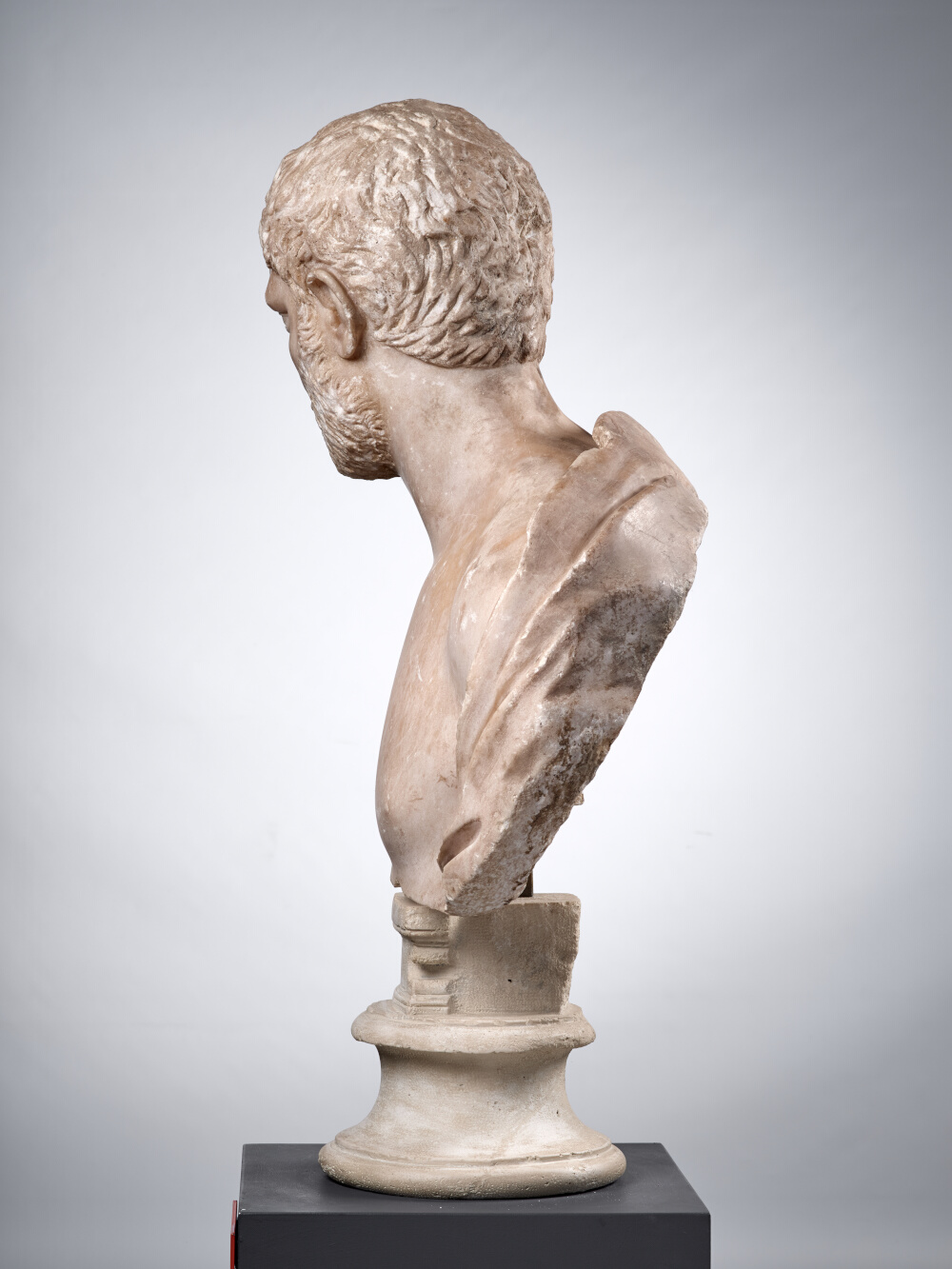
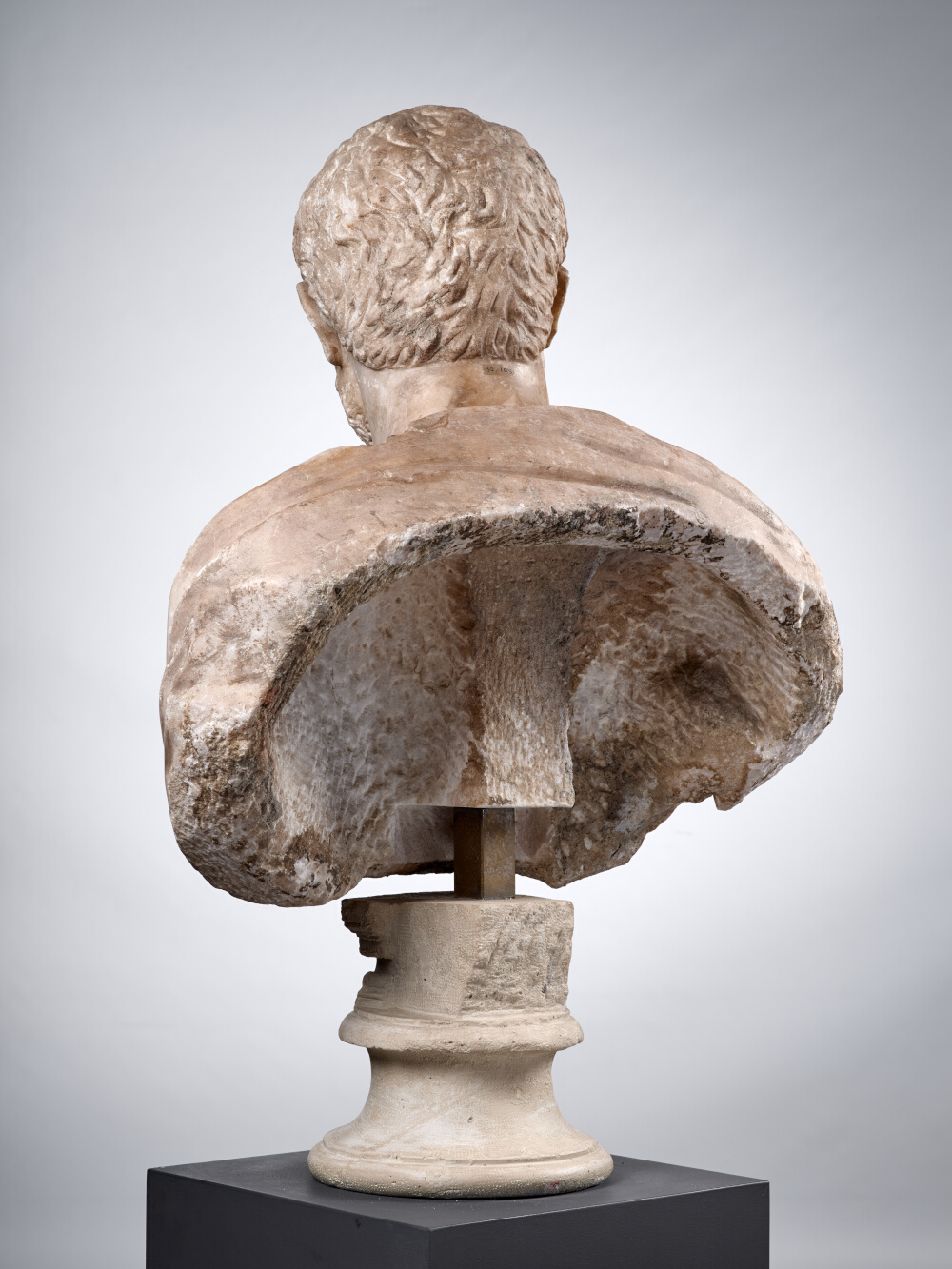
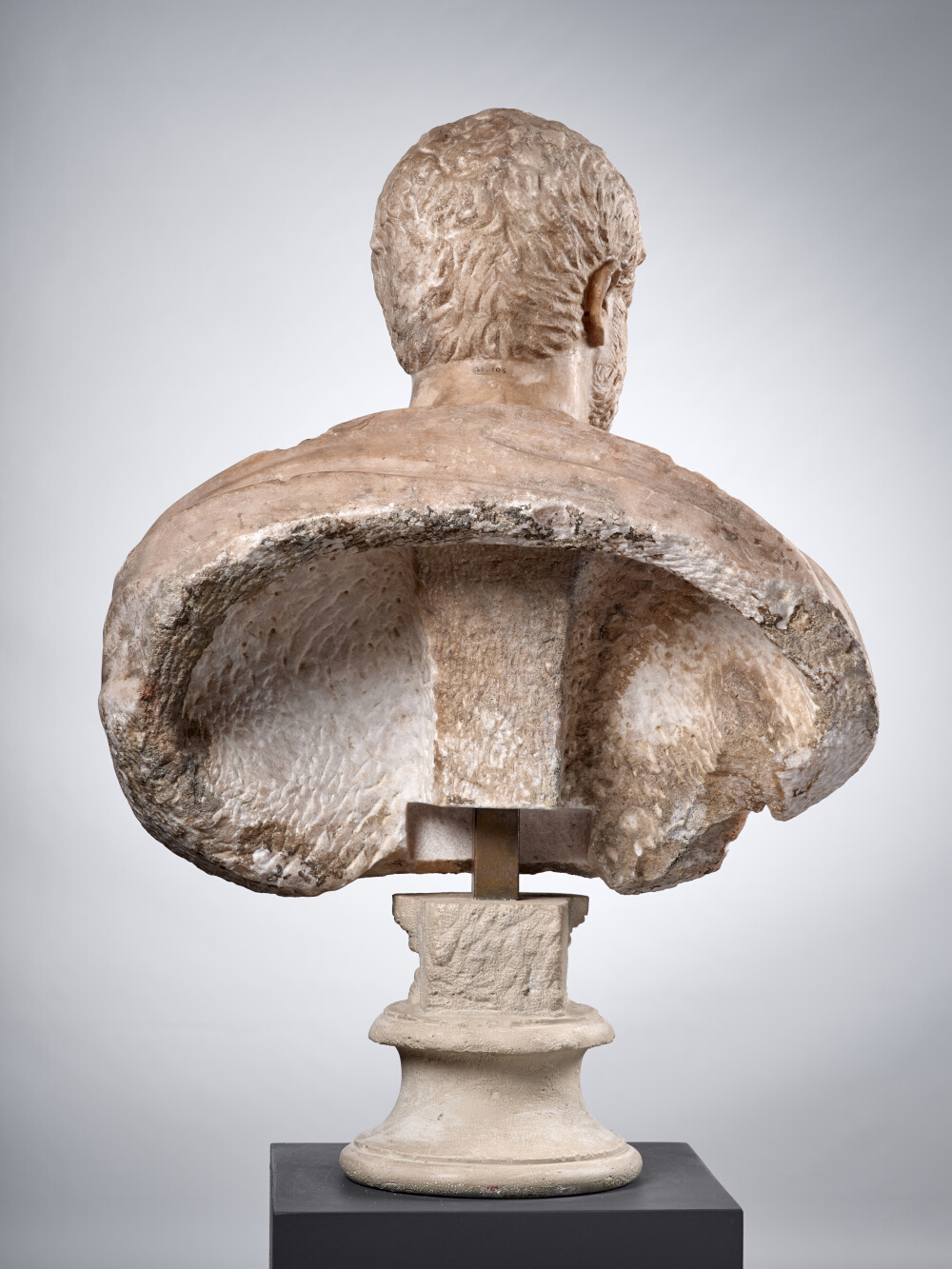
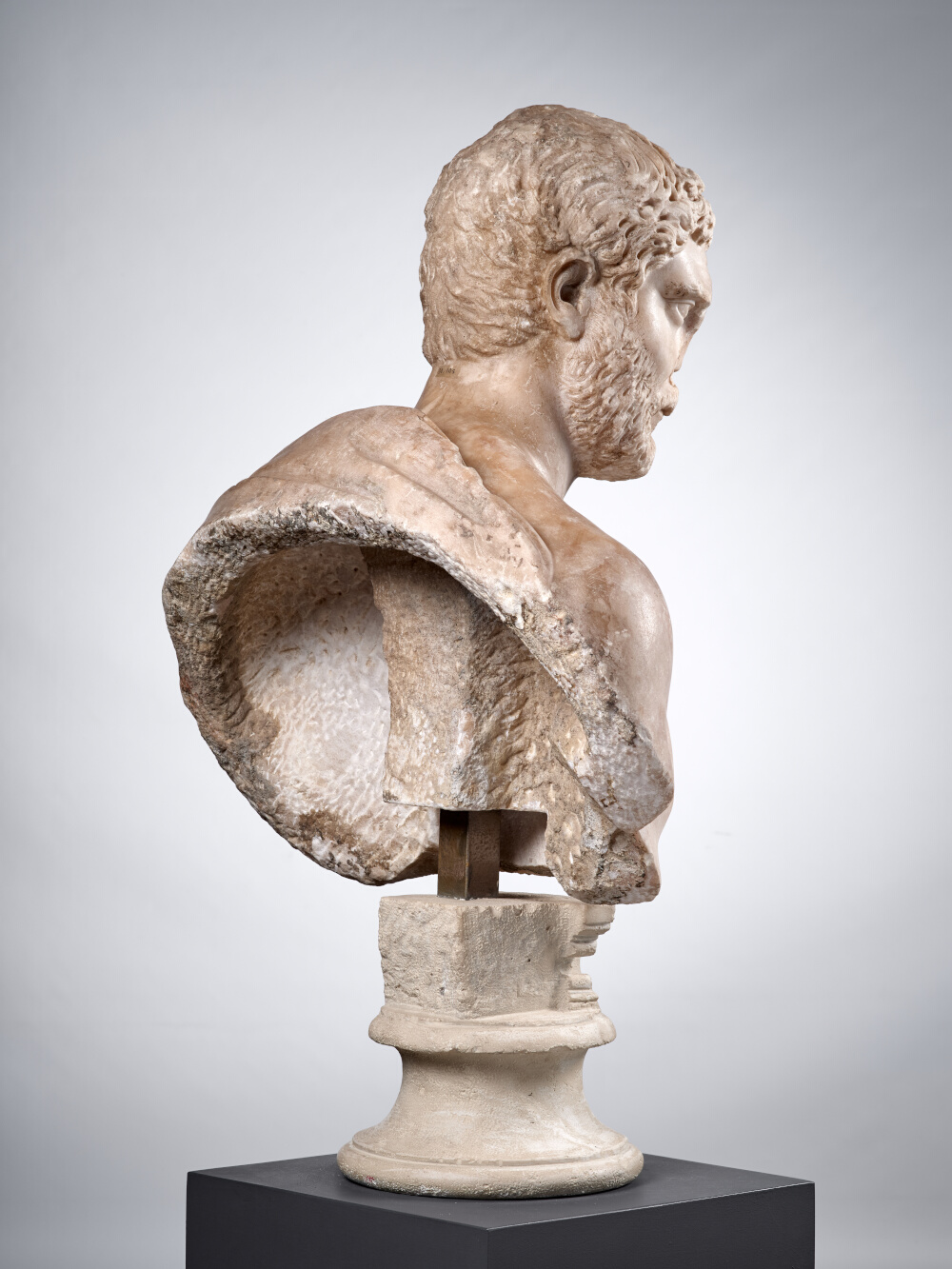
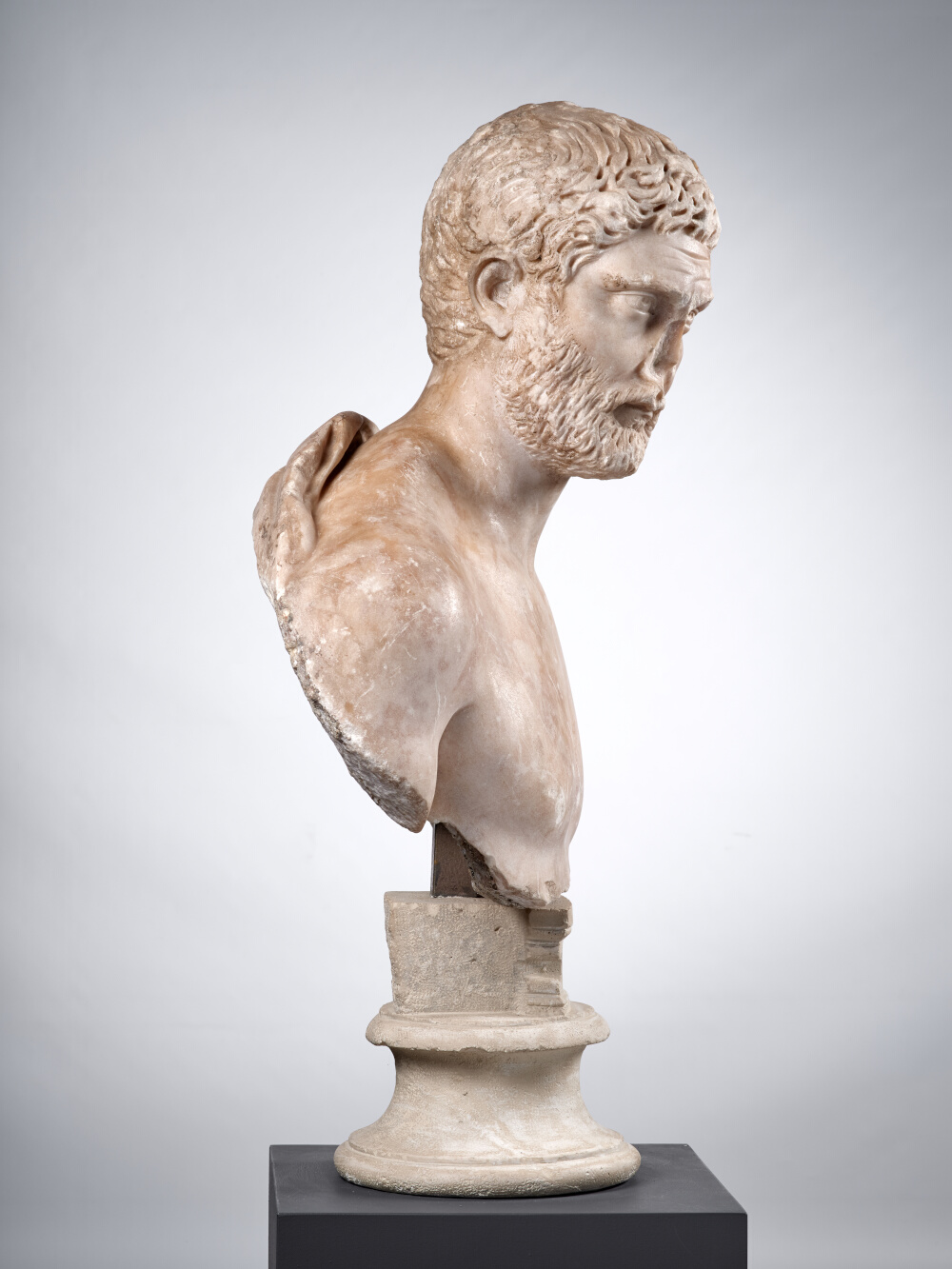
- Date de création
- Approximately 210 - 220
- Material
- Dokimium marble (Turkey)
- Dimensions
- H. 84 x l. 58 x P. 33 (cm)
- Inventory number
- Ra 59
- Photo credits
- Daniel Martin
The width of the bust of this imposing portrait is quite impressive. A cloak - the pallium worn by men of letters, philosophers and rhetoricians since classical times - barely covers the shoulders, having slid down to right and left, baring the chest completely, the muscle structure of which is quite clearly marked. On the left, it partly covers the upper arm, and was likely held against the body by the elbow according to a style frequently found in ancient statuary; on the right, more of the shoulder is revealed and the mantle probably passed under the arm before being brought back to cover the abdomen. This rather artificial and ostentatious way of wearing the garment draws attention to the powerful torso but also highlights the whole chest and echoes the movement of the head, which is slightly tilted, and more clearly turned to the right, a gesture that accentuates the declamatory ardour or force of persuasion of 2nd and 3rd century rhetoricians and sophists.
Could it be that in the Roman world, wearing such an item of clothing and draping it in such a fashion was enough to make whoever was wearing it an intellectual, a man of letters, a philosopher or a rhetorician? Or does it simply mean that whoever had chosen to be portrayed in this manner wanted to be seen as a man of culture? In Chiragan, alongside the portraits of emperors and members of the Imperial Household (domus Augusta), there is no doubt that these are high-ranking officials of the Empire who, through their writings, were to some extent assimilated to thinkers and orators: in particular, the jurisconsults, whose role with regard to the emperor was one of the most influential during the Severan dynasty.
Everything in this magnificent portrait, from the deeply-lined forehead, the strongly etched eyebrow arches, the gaze both thoughtful and worried, the tight lips and the determined chin, betrays the character’s extraordinary concentration, with none of the brutality that emanated from Caracalla’s well-known and rather fearsome portraits, to which Chiragan’s work nonetheless begs to be compared. Although the fringe has retained some of the considerable volume and movement of the shell-shaped strands that were popular during the late Antonine period and the reign of Septimius Severus, the short hair and beard are definitely those sported during the reign of Caracalla.
According to J.-C. Balty 2020, Les Portraits Romains: L’époque des Sévères, Toulouse, p. 223-231.
Bibliography
- Balty, Cazes 2021 J.-C. Balty, D. Cazes, Les portraits romains, 1 : L’époque des Sévères, 1.3 (Sculptures antiques de Chiragan (Martres-Tolosane), Toulouse. p. 46-48, 223-231
- Balty, Cazes, Rosso 2012 J.-C. Balty, D. Cazes, E. Rosso, Les portraits romains, 1 : Le siècle des Antonins, 1.2 (Sculptures antiques de Chiragan (Martres-Tolosane), Toulouse. p. 49, 58, 60, fig. 49, 57, 58, p. 269, fig. 204
- Cazes et al. 1999 D. Cazes, E. Ugaglia, V. Geneviève, L. Mouysset, J.-C. Arramond, Q. Cazes, Le Musée Saint-Raymond : musée des Antiques de Toulouse, Toulouse-Paris. p. 138
- Du Mège 1835 A. Du Mège, Description du musée des Antiques de Toulouse, Toulouse. p. 112-113, no 198
- Du Mège 1844 A. Du Mège, Description du musée des Antiques de Toulouse (document manuscrit ). f° 361
- Espérandieu 1908 É. Espérandieu, Recueil général des bas-reliefs de la Gaule romaine, 2. Aquitaine, Paris. p. 71, no 969
- Joulin 1901 L. Joulin, Les établissements gallo-romains de la plaine de Martres-Tolosane, Paris. p. 118 et pl. XVIII, no 266 B
- Meischner 1982 J. Meischner, « Privatporträts der Jahre 195 bis 220 n. chr., » Jahrbuch des Deutschen Archäologischen Instituts, 97, pp. 401–439. p. 412, no 12, fig. 16
- Rachou 1912 H. Rachou, Catalogue des collections de sculpture et d’épigraphie du musée de Toulouse, Toulouse. p. 42, no 59
- Roschach 1892 E. Roschach, Catalogue des musées archéologiques de la ville de Toulouse : Musée des Augustins, Musée Saint-Raymond, Toulouse. p. 32-33, no 59
- Weski et al. 1987 E. Weski, H. Frosien-Leinz, W.-D. Grimm, P. Fink, Das Antiquarium der Münchner Residenz : Katalog der Skulpturen, Munich. p. 257-258, pl. 143
- Musée Saint-Raymond 1995 Musée Saint-Raymond, Le regard de Rome : portraits romains des musées de Mérida, Toulouse et Tarragona. Exhibition, Mérida, Museo nacional de arte romano ; Toulouse, Musée Saint-Raymond ; Tarragone, Museu nacional arqueològic de Tarragona, 1995, Toulouse. p. 160
- Cahiers alsaciens d’archéologie 2010 Cahiers alsaciens d’archéologie, « Cahiers alsaciens d’archéologie, d’art et d’histoire, » 3. p. 100, fig. 25
To cite this notice
Capus P., "Bust of an intellectual (?)", in The sculptures of the roman villa of Chiragan, Toulouse, 2019, online <https://villachiragan.saintraymond.toulouse.fr/en/ark:/87276/a_ra_59>.